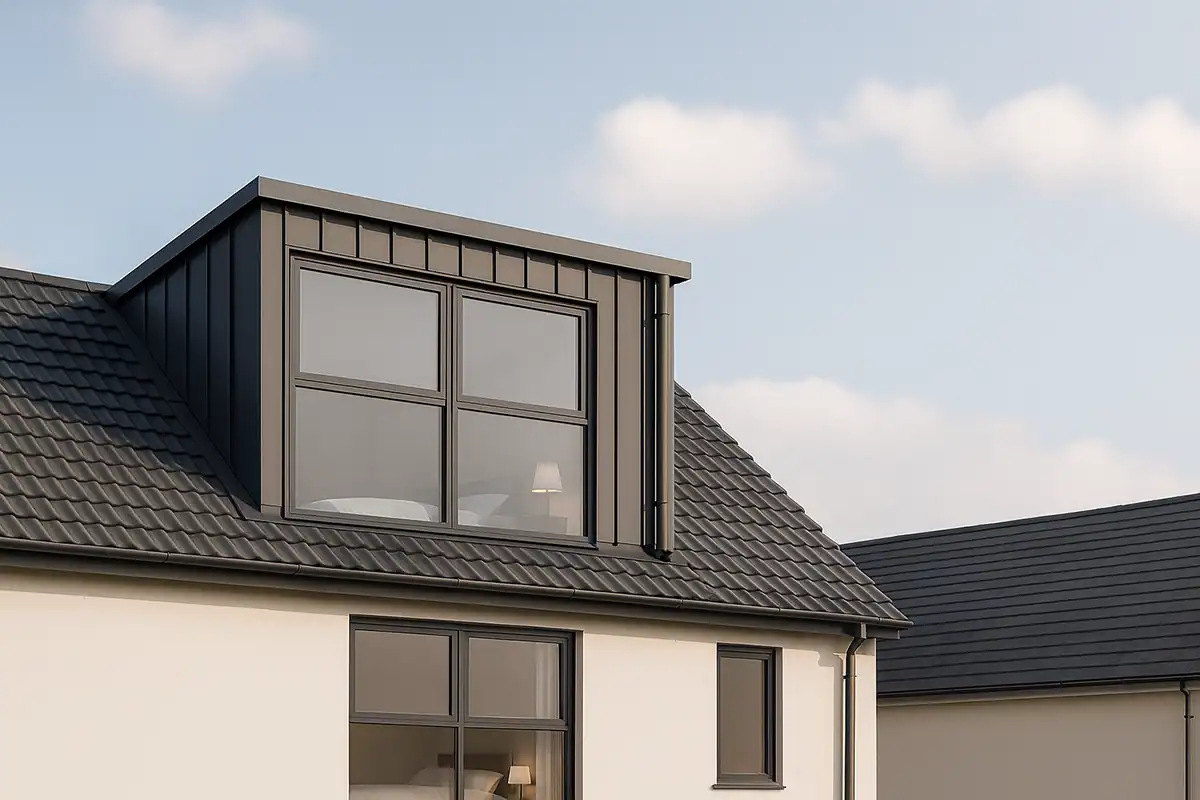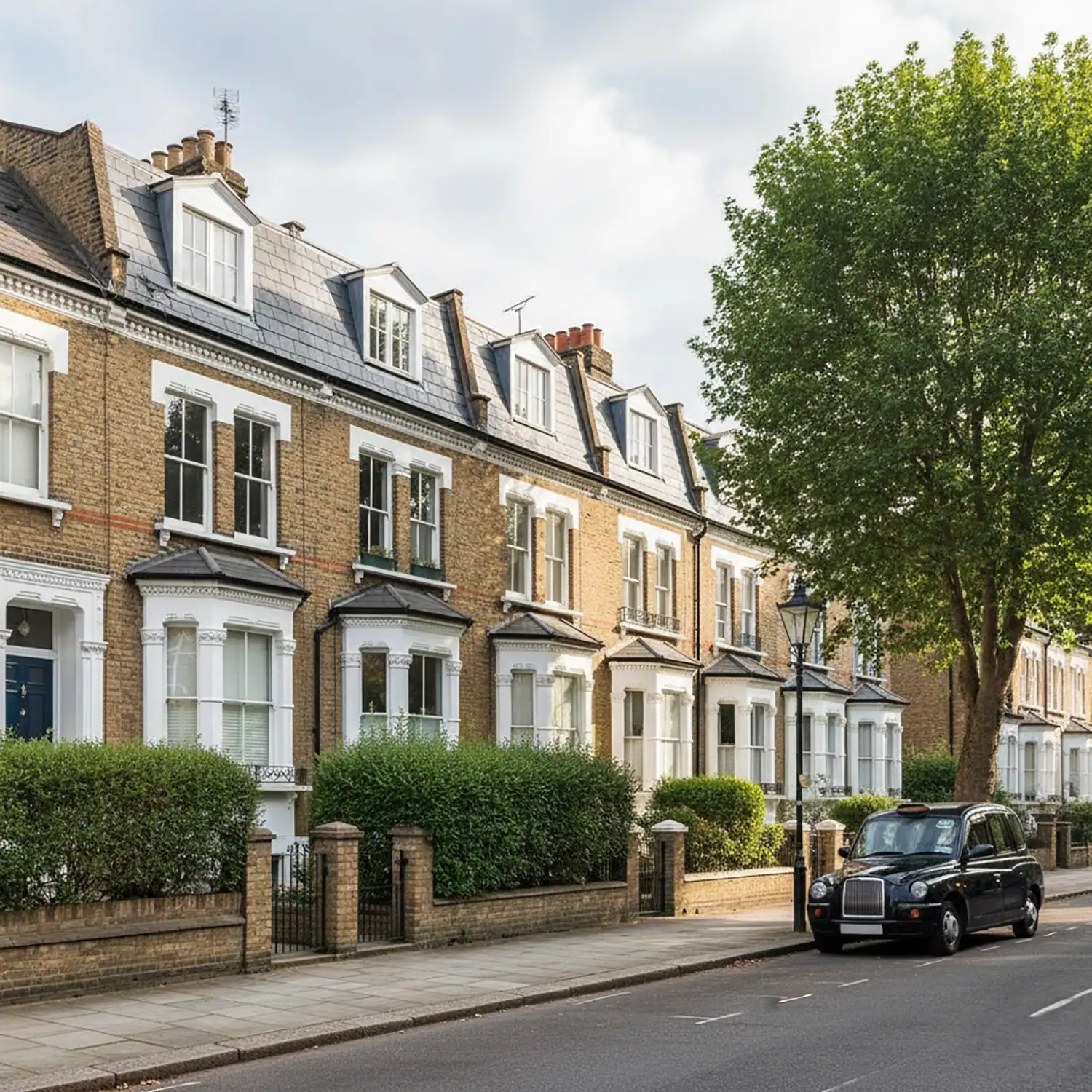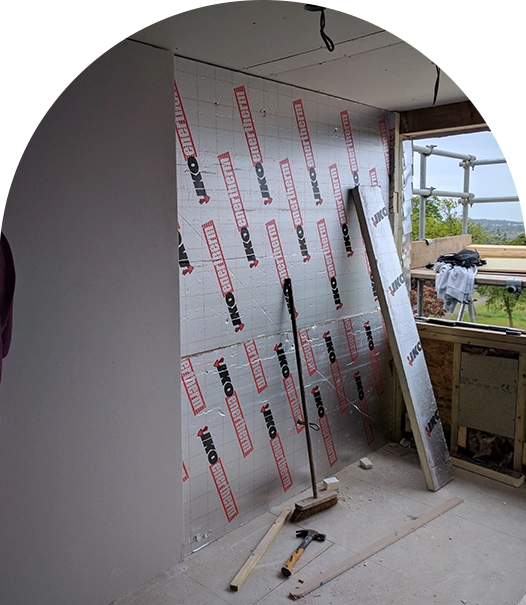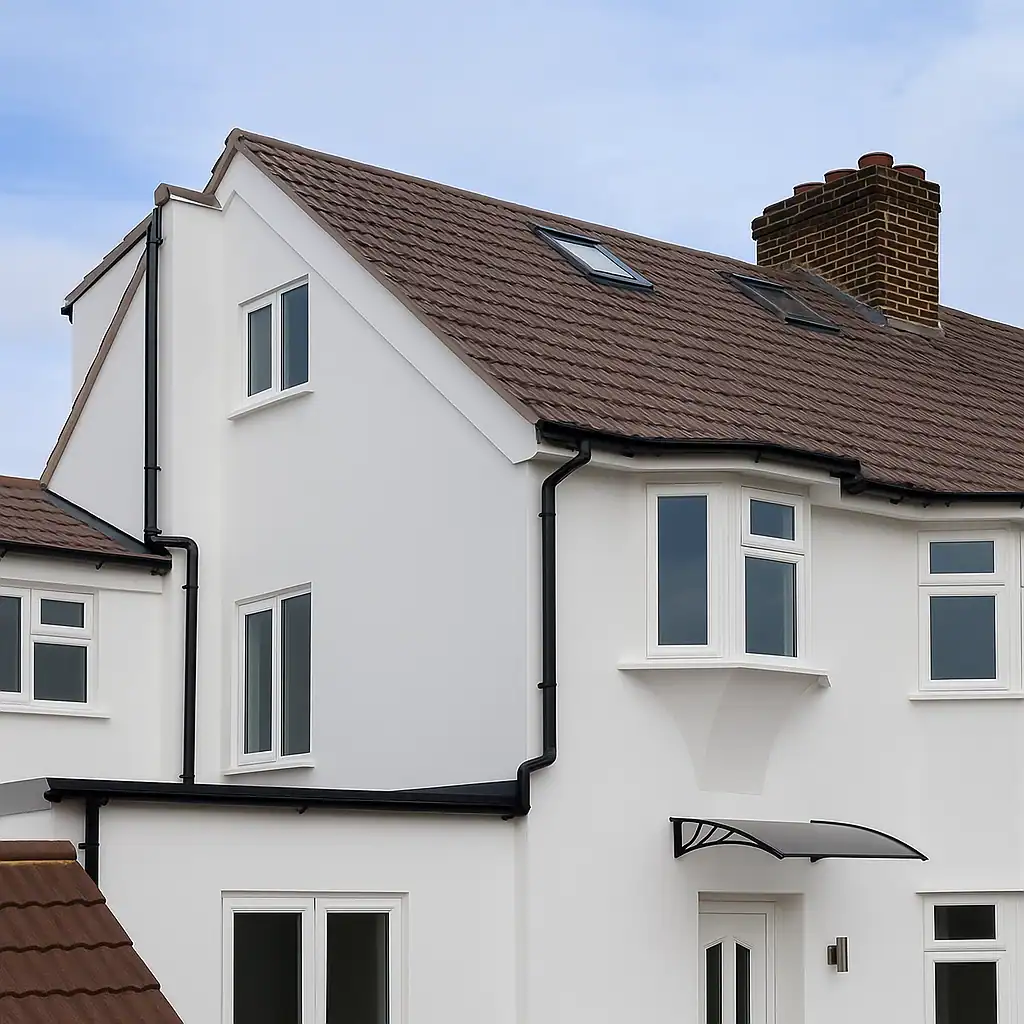Converting your loft into a functional living space is one of the most effective ways to add value to your property without the hassle of moving. Whether you’re considering a simple Velux conversion or a more complex dormer extension, understanding how long does a loft conversion take and the complete loft conversion process will help you make an informed decision. Before diving into timelines, it’s essential to determine which type of loft conversion is right for your home, as different conversion types have significantly different timescales. This comprehensive guide covers everything you need to know about the loft conversion process, different loft conversions, and how long a loft conversion take to complete.
How Long Does It Take – Different Loft Conversion Types
The duration of a loft conversion process varies significantly depending on the type of loft conversion, complexity of the project, and any unforeseen complications. Different loft conversions take between 4-8 weeks for the actual construction phase, but the entire loft conversion process from initial consultation to completion typically spans 4-6 months when including planning, design, and approval stages.
How long a loft conversion take depends on several factors including the structural condition of your current loft, the type of conversion chosen, weather conditions, and the availability of materials and tradespeople. The conversion may take longer if unexpected structural issues are discovered. It’s essential to check these factors when planning your project timescale, as the loft conversion may take additional time depending on the complexity.
Advantages of Different Loft Conversions
Different loft conversions offer numerous benefits that make them an attractive home improvement option. They provide additional living space without reducing garden area or requiring planning permission in most cases, as many conversions that fall under permitted development rights. This extra space can serve multiple purposes – from creating a master bedroom suite with en-suite bathroom to establishing a home office, children’s playroom, or guest accommodation.
The type of loft conversion chosen will determine the scope of benefits. From a financial perspective, complete loft conversions typically offer excellent return on investment, often adding 15-20% to your property’s value while costing significantly less than moving to a larger home. They’re also more environmentally friendly than extending outward, as they utilize existing roof space and require fewer materials and less ground disturbance. However, some loft conversions need planning permission depending on the scope and local authority requirements.
How Long Does It Take – Velux Type of Loft Conversion
A Velux type of loft conversion is one of the simplest conversion types, typically taking 4-6 weeks to complete once work begins. This timeframe assumes your loft is suitable for conversion and already has adequate headroom and structural integrity. The loft conversion process involves installing roof light windows (Velux windows or similar), adding insulation, flooring, and basic electrical work.
The relatively short construction time is because Velux conversions don’t require structural changes to the roofline, making them one of the simplest conversion types compared to different loft conversion types. However, you’ll still need to factor in the planning and preparation phase, which can add several weeks to the overall project timescale. The loft conversion will take less time than more complex options, but it’ll take careful planning to ensure quality results.
How Long Does It Take to Complete Simple Loft Conversions
A simple type of loft conversion, which typically includes basic structural work, insulation, flooring, lighting, and possibly a staircase, generally takes 4-6 weeks for the construction phase. This type of loft conversion assumes your current loft space already has reasonable headroom and doesn’t require major structural modifications.
How long does it take can be affected by the need to reinforce floor joists, install proper insulation, and ensure the space meets building regulations. Access can also impact how long a loft conversion takes – if a new loft conversion requires a staircase to be installed, this adds complexity and time to the project. Simple conversions are among the most popular different types of loft conversions for homeowners seeking to add value to your property efficiently. The conversion may take additional time if structural assessments reveal the need for reinforcement work.
How Long Does It Take – Dormer Type of Loft
Different loft conversions involving dormer extensions are more complex and take to complete approximately 6-10 weeks. This extended timescale reflects the significant structural work involved in creating the dormer extension, which projects from the existing roof slope to provide additional headroom and floor space with dormer windows.
The loft conversion process involves cutting into the existing structure of the roof, which essentially creates a hole in the roof that must be properly sealed and weatherproofed. Building the dormer framework, installing new roofing, windows, and ensuring proper weatherproofing follows. Weather conditions can significantly impact how long a loft conversion takes, as much of the work involves exposure to the elements during construction. Dormer windows provide excellent natural light and ventilation to the new loft space. The loft conversion will take longer if weather conditions are poor during the 8 weeks of typical construction time.
Do You Need Support from a Professional?
Professional support is essential for different loft conversions, both for legal compliance and quality assurance. Building regulations approval is mandatory for complete loft conversions, and structural engineers are typically required to ensure the conversion is safe and meets current standards. Conversion specialists understand the complexities involved in a loft conversion project.
Most homeowners benefit from hiring specialist loft conversion companies that can manage the entire loft conversion process, from initial design through to completion. These professionals understand the complexities of building regulations, structural requirements, and potential complications that can arise during conversion work. An architect or architectural designer may also be required for more complex projects.
While some elements like decorating might be suitable for DIY completion, the structural, electrical, and plumbing work should always be completed by qualified professionals to ensure safety and compliance with building standards. Everything you need to know about regulations should be handled by experienced conversion specialists.
How Much Does a Professional Loft Conversion Cost?
Professional loft conversion costs vary significantly based on the type of conversion, location, and specification level. As of 2025, typical costs range from £15,000 for a basic Velux conversion to £60,000+ for a complex dormer conversion with en-suite bathroom facilities.
The investment in professional services typically represents excellent value when considering the expertise provided, compliance with regulations, and the significant increase in property value achieved. Professional conversions also come with warranties and insurance coverage that protect your investment.
Loft Conversion: Cost Breakdown 2025
Understanding the cost components helps in budgeting and decision-making for your loft conversion project.
Velux Conversion (£15,000-£25,000): Basic structural work, roof windows, insulation, flooring, electrical work, and staircase if required.
Dormer Conversion (£25,000-£45,000): Includes all Velux conversion elements plus dormer construction, additional roofing work, and more complex structural modifications.
Hip to Gable (£35,000-£60,000): Most expensive option including extensive structural work, new gable wall construction, and significant roofing modifications.
Additional costs may include planning permission fees (£200-£500), building regulations approval (£500-£1,500), and optional extras like en-suite bathrooms (£5,000-£10,000) or premium finishes.
How Much Does a Loft Conversion Add to the Value of Your House?
Loft conversions typically add 15-20% to property value, making them one of the most cost-effective home improvements available. For an average UK home valued at £250,000, a loft conversion could add £37,500-£50,000 in value, representing excellent return on investment when compared to conversion costs.
The value added depends on several factors including the quality of conversion, additional bathroom facilities, local property market conditions, and how well the conversion integrates with the existing property. Professional conversions that meet all building regulations and are completed to high standards typically achieve the best value returns.
Building Regs Approval & Structural Design – Convert Your Loft Process (3-4 months)
Building regulations approval is a crucial phase of the loft conversion process that typically takes 3-4 months to complete. This process involves submitting detailed structural drawings and specifications to your local authority for approval before work can commence. The conversion process depends on the complexity of your chosen design and local planning requirements.
The timeline includes initial design consultation, structural calculations by a qualified engineer, preparation of technical drawings, submission to building control, review period, and any necessary revisions. Starting this conversion process early is essential to avoid delays in your overall project timeline. Some loft conversions need planning permission if they don’t fall under permitted development rights, which can extend this phase. The project requires planning approval from the local authority, and it’ll take longer if additional documentation is needed. The loft conversion may take additional months if the project requires planning permission beyond standard building regulations.
Cost of Planning Permission – Long A Loft Conversion Process
Most different loft conversions fall under permitted development rights and don’t need planning permission, saving both time and money. However, if your property is in a conservation area, Area of Outstanding Natural Beauty, or if the conversion exceeds permitted development limits, the project requires planning permission.
Planning permission costs £528 (Gone up in 2025) for householder applications as of 2025, but the process can add 8 weeks to your project timeline. The loft conversion can take significantly longer if planning permission is required. It’s advisable to confirm whether loft conversions need planning permission early in your planning process to avoid unexpected delays. The conversion may take additional time depending on local planning authority workload and whether the project requires planning amendments. Your local authority will need to take accurate measurements and assess the proposal, which depends on the complexity of your specific conversion type.
Design – Different Loft Conversion Types
Effective design is crucial for maximizing both the functionality and value of different loft conversion types. Key considerations include headroom requirements (minimum 2.3 meters in most areas), natural light provision, staircase location and design, storage solutions, and integration with existing home layout.
Professional designers can help optimize space utilization while ensuring compliance with building regulations. Good design also considers future needs and ensures the conversion enhances rather than compromises the existing property’s character and flow. The type of loft chosen will impact design possibilities – mansard loft conversion options differ significantly from simple Velux installations. The conversion may take longer if complex design elements are involved, and how long does it take depends on the complexity of your requirements.
Condition of Loft
The existing condition of your loft significantly impacts both timeline and cost. Factors affecting the project include structural integrity of floor joists, roof condition, existing insulation, electrical systems, and access arrangements.
A structural survey is typically conducted early in the process to identify any issues that need addressing. Common requirements include floor joist reinforcement, roof repairs, rewiring, and improved insulation to meet current building standards.
How Long Does a Hip to Gable Loft Conversion Take?
Hip to gable conversions are among the most complex different loft conversion types, typically taking 8-12 weeks to complete. This type of loft conversion involves extending a hipped roof to create a gable end wall, significantly increasing the usable loft space but requiring substantial structural work.
The extended construction time reflects the complexity of removing part of the existing structure of the roof, building new supporting walls, and ensuring the new loft conversion integrates seamlessly with the existing building. Weather dependency is particularly significant for larger or more complex conversions like hip to gable due to the extensive roof work required. These conversions can add substantial value of your home when completed professionally.
Best Time Of Year To Do A Loft Conversion
The optimal time for different types of loft conversions is during late spring through early autumn (April to September) when weather conditions are most favorable. Dry conditions are particularly important for conversions involving roof work, such as dormer or hip to gable extensions, as wet weather can cause significant delays and complications to the loft conversion process.
Summer months offer the advantage of longer daylight hours, allowing work to progress more efficiently. However, this is also peak season for construction work, which may affect contractor availability and potentially increase costs. Planning your new loft conversion for early spring start can help secure better contractor availability while still benefiting from improving weather conditions. The average time for planning should account for seasonal factors that might affect how long a loft conversion takes.
Party Wall Agreements
Party wall agreements may be required if your loft conversion affects shared walls with neighboring properties. This is most common with terraced houses where structural work might impact adjoining properties.
The party wall process involves serving formal notices to neighbors, potential dispute resolution, and agreed-upon procedures for the work. This process can add 2-3 months to your project timeline and costs typically range from £1,000-£3,000 for professional party wall surveyor services.
Frequently Asked Questions
Q: What is the average duration of a loft conversion?
The average loft conversion takes 4-8 weeks for construction, but the entire process from initial consultation to completion typically spans 4-6 months including planning, approvals, and preparation phases.
Q: Can unexpected challenges and delays impact the timeline of a loft conversion?
Yes, unexpected issues such as structural problems, weather delays, material shortages, or discovering asbestos can extend project timelines. Professional contractors typically build contingency time into their schedules to accommodate potential complications.
Q: How can I effectively manage the timeline of my loft conversion project?
Effective timeline management involves early planning, securing all necessary approvals before construction begins, maintaining clear communication with contractors, having realistic expectations about potential delays, and ensuring adequate budget for unexpected issues.
Q: Why is clear communication important in maintaining the timeline of a loft conversion?
Clear communication ensures all parties understand expectations, timelines, and potential issues early. Regular updates help identify problems before they become major delays, and good communication facilitates quick decision-making when choices need to be made during construction.
Q: What is the cost of hiring professionals?
Professional loft conversion services typically include project management, structural design, building regulations compliance, and coordination of all trades. Costs for professional services are usually incorporated into overall conversion pricing, representing approximately 5% of total project cost.
The value of professional services extends beyond just cost considerations to include warranty coverage, insurance protection, regulatory compliance, and peace of mind that the work meets all required standards.
Q.What are the benefits of a loft conversion?
Beyond the obvious benefit of additional living space, loft conversions offer numerous advantages including increased property value, improved energy efficiency through better insulation, enhanced natural light in upper areas of the home, and the ability to create specialized spaces like home offices or guest suites.
Loft conversions also avoid the stress and expense of moving house while providing the additional space many families need. They’re typically more cost-effective than ground-floor extensions and don’t reduce garden space or affect ground-floor room layouts.
Reducing disturbance and disruption, without adding duration
Minimizing disruption during your loft conversion requires careful planning and clear communication with your conversion team. Effective strategies include establishing clear working hours, protecting existing areas from dust and debris, maintaining access routes, and coordinating deliveries efficiently.
Professional loft conversion companies typically implement dust barriers, protect flooring and furnishings, and maintain clear communication about daily activities. While some disruption is inevitable, good planning can significantly minimize the impact on daily life.
How Can AC Design Solution with Loft Conversions?
Specialist loft conversion companies provide comprehensive services from initial consultation through project completion. They handle all aspects of the conversion process including design, planning applications, building regulations approval, and construction management.
Experienced conversion specialists understand local authority requirements, building regulations, and potential complications that can arise during projects. They coordinate all trades, manage timelines, and ensure quality standards throughout the conversion process.












